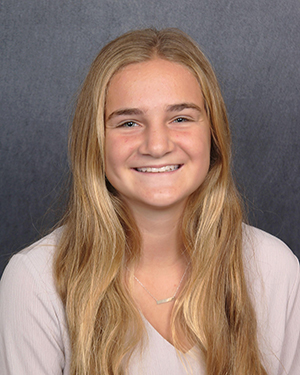An Undergraduate Student Shares Her Summer 2022 RIDR Program Experience
 Each summer, the UC San Francisco Department of Radiology and Biomedical Imaging's Research Initiative to promote Diversity in Radiology (RIDR Program) welcomes high school, college, and medical students to participate in basic science, translational, or clinical radiology research projects. The program is a unique research experience and focuses mentorship to students from diverse backgrounds.
Each summer, the UC San Francisco Department of Radiology and Biomedical Imaging's Research Initiative to promote Diversity in Radiology (RIDR Program) welcomes high school, college, and medical students to participate in basic science, translational, or clinical radiology research projects. The program is a unique research experience and focuses mentorship to students from diverse backgrounds.
We asked Allison, a senior at the University of Michigan dual majoring in Molecular, Cellular and Developmental Biology and Spanish, to share her experience participating in the RIDR program during Summer 2022.
How did you find out about the UCSF RIDR Program and what made you decide to apply?
I was searching online for a summer internship that combined two of my main interests - research and radiology - when I found the RIDR program. At first, I was attracted to the program because it offered an experience in clinical radiology research with an established faculty researcher at UCSF. But the more I learned about the RIDR program, the more interested I became. I watched a YouTube video from a RIDR program alum and read through the list of mentors and a few of their recent research contributions. I was impressed by the praise from previous interns and the work of UCSF physicians and researchers, both of which inspired me to apply.
What interests you most about radiology and biomedical imaging?
I am most intrigued by radiology because it is a crucial component of every medical specialty. Radiologists support the work and success of every specialty, allowing them to provide a broad range of clinical care. Additionally, their impact is instant. As soon as a case is read, the information they found is used to inform the patient's treatment plan.
Tell us about the projects that you worked on this summer.
This summer I worked in Peder Larson, PhD's lab where I performed immunohistochemistry stains of renal cell carcinomas (RCCs) resected from patients and helped process MR images from hyperpolarized carbon-13 RCC MR studies from the same patients. The metabolic images I compiled will be used for future correlative studies with pathology. Moving forward, we plan to correlate hyperpolarized carbon-13 metabolic imaging data to tumor pathology to determine a way to predict tumor aggressiveness using MRI.
My mentors were extremely welcoming and supportive. Dr. Larson encouraged me to attend lab meetings every Monday to learn about the research of the PhD candidates and postdocs and to regularly share my own progress with everyone. He fostered a collaborative environment and provided supervision over my project, offering continual and helpful feedback. Z .Jane Wang, MD is a great teacher, and I learned so much about abdominal imaging while in the reading room with her. I am grateful that the RIDR program connected me with such wonderful mentors that encouraged me to continue to pursue radiology, despite it being a field typically dominated by men.
What did you find most useful and enjoyable about the program?
In addition to the opportunity to contribute to my own research project in biomedical imaging and the valuable mentorship, I found the RIDR career development sessions and daily resident conferences extremely insightful. It was inspiring to learn about the different research interests of UCSF radiologists and hear about their unique paths to becoming physicians. I found the resident panel discussion invaluable; I will never forget the advice and encouragement from the UCSF residents, their enthusiasm toward the field of radiology was contagious.
The ability to attend the daily resident conferences allowed me to learn from interesting cases, watch residents collaborate on diagnoses, and listen to lectures from radiologists at a top-tier university.
What are your future career plans and goals?
Interacting with the medical professionals at UCSF during my time in the RIDR program reinforced my desire to become a physician. I plan to attend medical school and seek out more radiology opportunities moving forward, whether they are through medical student organizations, shadowing opportunities, or similar biomedical imaging internships.
The goal of the RIDR program is to provide an early opportunity for students to explore radiology as a career choice and support the next wave of innovation in our field. Visit the program page for more information.
